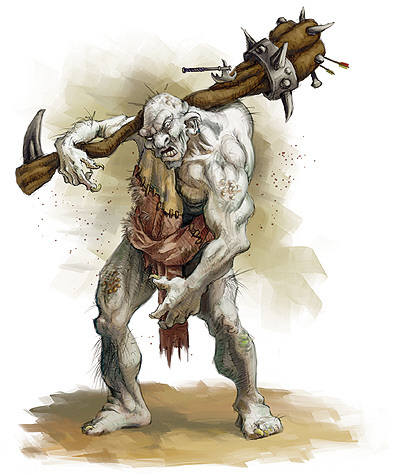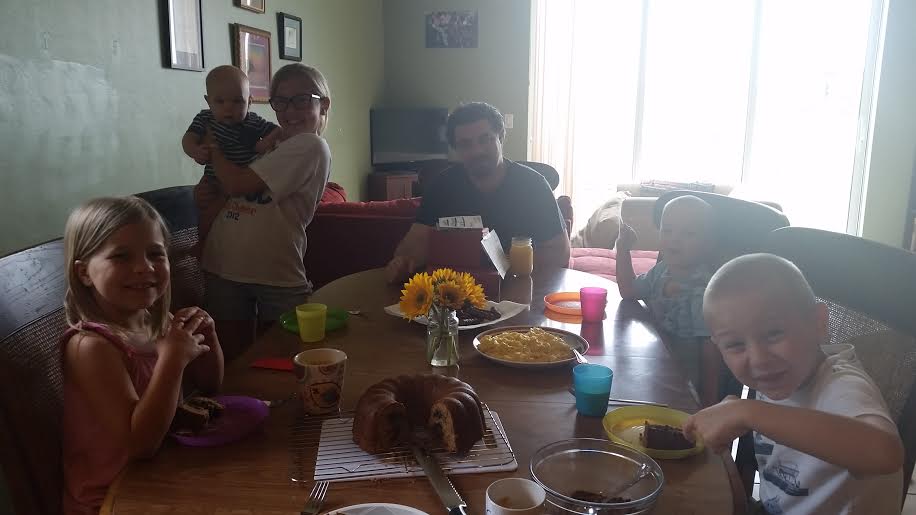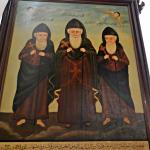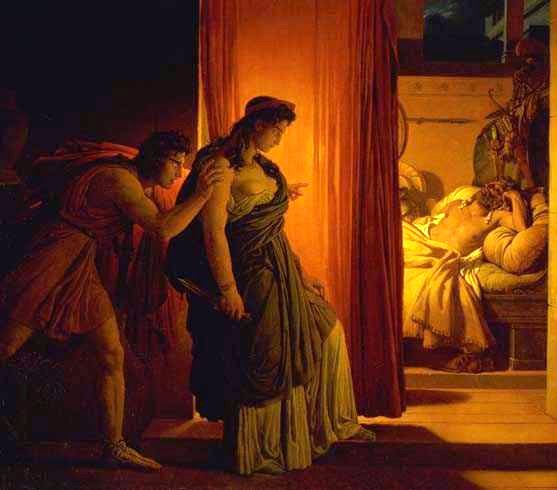
Sounds weird, I know, but that sun-baked hilltop is a fixed point in my life. Everything changed the day I went to Mycenae.
It was so hot when we clambered off the buses. My classmates were eager and bounced ahead of my roommate and me, chattering and laughing as if we hadn’t all been out drinking in Delphi till 2 am the night before.
I was hungover. Really, really hungover – the most hungover I remember being during that whole semester abroad, which is saying something. I didn’t want to explore an archeological site so much as I wanted to curl up and die. I threw up beside the bus and then fished every crumpled euro I could find out of my pockets, trading them all for teensy bottles of overpriced water.
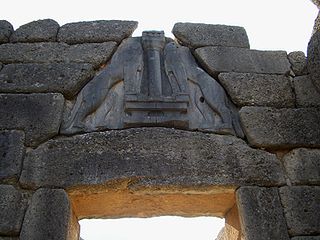
The sun was ruthless as we hiked up toward the Lion Gate. It was everywhere at once, the white sand and white stones throwing it back at us from every angle. I drank bottle after bottle of water, chasing down an aspirin and then two more in rapid succession. By the time we could see the arch of the gate up ahead of us, I’d sweated out most of the the vodka left in my system. The aspirin and water kept me from wincing as I squinted up at the headless lionesses sculpted into the limestone. We all stopped, then. It was the Lion Gate, for God’s sake. A weirdly unnatural hush fell over us just for an instant, before it was broken by exclamations and the simultaneous clicks of a thousand cameras.
We passed under the gate and into Mycenae. Sun-bleached, waist-high ruins sprawled out in front of us. Everyone else started methodically, at the beginning, with the royal graves just inside the Lion Gate. I studied my map for a minute, got my bearings, and bolted straight for the bathroom.
Not the actual bathroom, and not to puke, either. If I had to explore Mycenae with a hangover in 100-degree heat, I was gonna make it count. I would start where Agamemnon ended.
I found the palace instantly, but it took me forever to find the room the map identified as the bathroom. I kicked up so much dust as I wandered among the crumbling walls that I could feel it between my teeth. After about 20 minutes, my friend Byron came along and helpfully turned my map the right way up. We found it together, on the east side of the palace.
I sat down on the dirt, in the place where Agamemnon died, and pulled my knees up to my chest. It was smaller than I thought it would be. I didn’t see how a bathtub could even fit in the room, much less a war hero, his murderous wife, and her mendacious lover. It just seemed like ruins that had always been ruins, and empty.
I could feel my headache coming back. I started to put my head down on my knees when I saw it, out of the corner of my eye, along the base of the wall. The stones were streaked with red.
I shit you not. There was not a speck of color on that hilltop except for the dark, ancient red streaks along the stones at the edge of the bathroom floor. Byron saw it, too, and a few other people who were nearby — probably because I freaked out and yelled, “The stones are red! The floor is red! Agamemnon, dead!” like a lunatic.
But that one glimpse of red changed everything. This wasn’t Mycenae, dead — it was Mycenae, alive. I could see it all — Clytemnestra on the ramparts, Cassandra prophecying madly in the courtyard, Iphegenia in braids, being borne away through the Lion Gate, Electra in rags with her water jug, Orestes fleeing from the Furies, and the purple tapestry spreading, spreading, spreading. I swear I heard Aegisthus whispering in the palace corridors and Electra wailing from the tomb of Agamemnon.
That day in Mycenae, myth became real — I could see it, hear it, touch it. Of course, I doubt it all played out as perfectly staged as Aeschylus would have us believe. Maybe the curse on the house of Atreus didn’t unfold quite so neatly. Maybe there was no curse at all. Hopefully Atreus didn’t feed Thyestes his own children. But the absolute veracity of the history of Mycenae isn’t the point, anyway. The point is, the stories are true.
Mycenae is a microcosm of the evil the human soul is capable of — like a horrible inversion of Socrates’ ideal city. The story of the house of Atreus plumbs the depths of human cruelty — and yet, nearly every character is sympathetic. They were all justified, in their own way — all betrayed, all seeking vengeance. I mean, who didn’t want to murder Agamemnon in a bathtub at the end of Iphigenia at Aulis? It is human nature to sympathize with the betrayed, since we all fear betrayal.
Last week, Peggy Rosenthal wrote a reflection on evil at work in the world today, prompted by a production of Othello. What she said got me thinking about how seriously dangerous the way we approach evil has become.
Watching Iago at work, I was terrified by the ways that evil can get a stranglehold on us. In fact, I think this was Shakespeare’s own interest in the play: not Othello’s jealousy but rather the power of evil to turn us into monsters who destroy one another and ourselves.
So I found myself wondering: Where is Iago at work in our own world today?
I don’t think it’s mainly in individuals. Yes, there are some evil dictators around the world. Yes, there is ISIS. And yes, I’m often tempted to label as evil some of our own politicians and media personalities, whose policies and pronouncements I find terrifyingly destructive of the collective wellbeing.
But the “art of darkness” (to play on Hardy’s title) is practiced today on a grander scale, I think, and all the more insidious because it’s not concentrated in a single person.
The enormous systems of injustice that keep whole classes and even populations in poverty and oppression; the greed that seems the driving force of the multi-national corporate power structure; the racism and demonization of the “other” who is different from ourselves; war itself, I’d even add. These are all much slipperier than Iago’s evil, harder to get a grip on, in our minds and in our art.
The idea of evil existing primarily on a systemic scale is absurd. It’s a grand, noble kind of idea that’s not so much truth as truism. But it’s worse than just truism. A friend of mine says that truisms are useless — relegating evil to a theoretical realm outside our own two ears is straight-up dangerous.
My husband thinks I’m naïve because I believe people are essentially good. Not just good in essence, but good in motivation – everyone moves toward the good insofar as they understand it, after all. I’ve always genuinely believed that almost all of the evil human beings inflict on each other can be chalked up to an imperfect understanding of the good.
In the past few years, though, I’ve seen Catholics behave abominably toward each other, with the kind of mendacity that makes Iago look as subtle as a gun. In my best moments I’ve done the rounds in my head trying to figure out the motivations, to really understand the why behind the what. Sometimes I’m even virtuous enough to start with the assumption that they are right and I am wrong. If I can create a facsimile of what the world looks like through someone else’s eyes, usually I’m no longer angry. Sometimes I even discover that they are indeed right, and I am in the wrong.
In my worst moments, I find it hard to keep the faith. Not just in human goodness, but in God Himself. Lately there’s been a lot more worst moments than best. If I hadn’t encountered Catholicism where I did, in the everyday, heroic goodness of Catholics, I’d be hightailing it the hell out of this Church. No intellectual recognition of truth held by a group of people can withstand lived encounters with evil in the same. The cognitive dissonance is too great, and too painful. It’s a betrayal of love — not the sexy kind, with fiery confrontations and smashed glassware, but the silent, festering, soul-killing kind. The kind of betrayal that prompts despair, not revenge.
But despair is also acquiescence to evil. It seeps out of me and poisons everyone I love, and everyone who loves me. It’s not as violent as vengeance, but it’s no less destructive. Sure, it’s not on par with ISIS indoctrinating children into bloodlust, but that doesn’t absolve me of culpability.
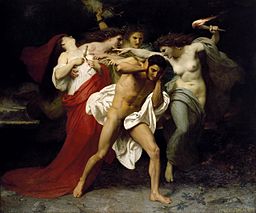
We are all capable of evil. Removing evil to a plane of existence where we can do literally nothing to combat it also removes our responsibility for evil in our daily lives– whether it be the evil we encounter, the evil we create, or the evil we surrender to. Maybe it’s born of an imperfect understanding of the good, or maybe sometimes we just delight in malice. Whatever the cause, though, evil always starts with just one person. Even systemic evil isn’t a nebulous, nefarious force in the world — systems are built by people, and require the consent of people to continue existing. Racism isn’t a Jungian binary, it’s a person who believes that another person is less human, less good, or less worthy. Evil begins in the human heart — in any human heart. Maybe in all of them. In your heart, probably — in my heart, certainly.
This is why stories are so important. It’s vital for us, as humans, to see human cruelty and to understand why — to sympathize, even, with the perpetrators. Not so we can excuse their actions, but so we can see our own more clearly.


